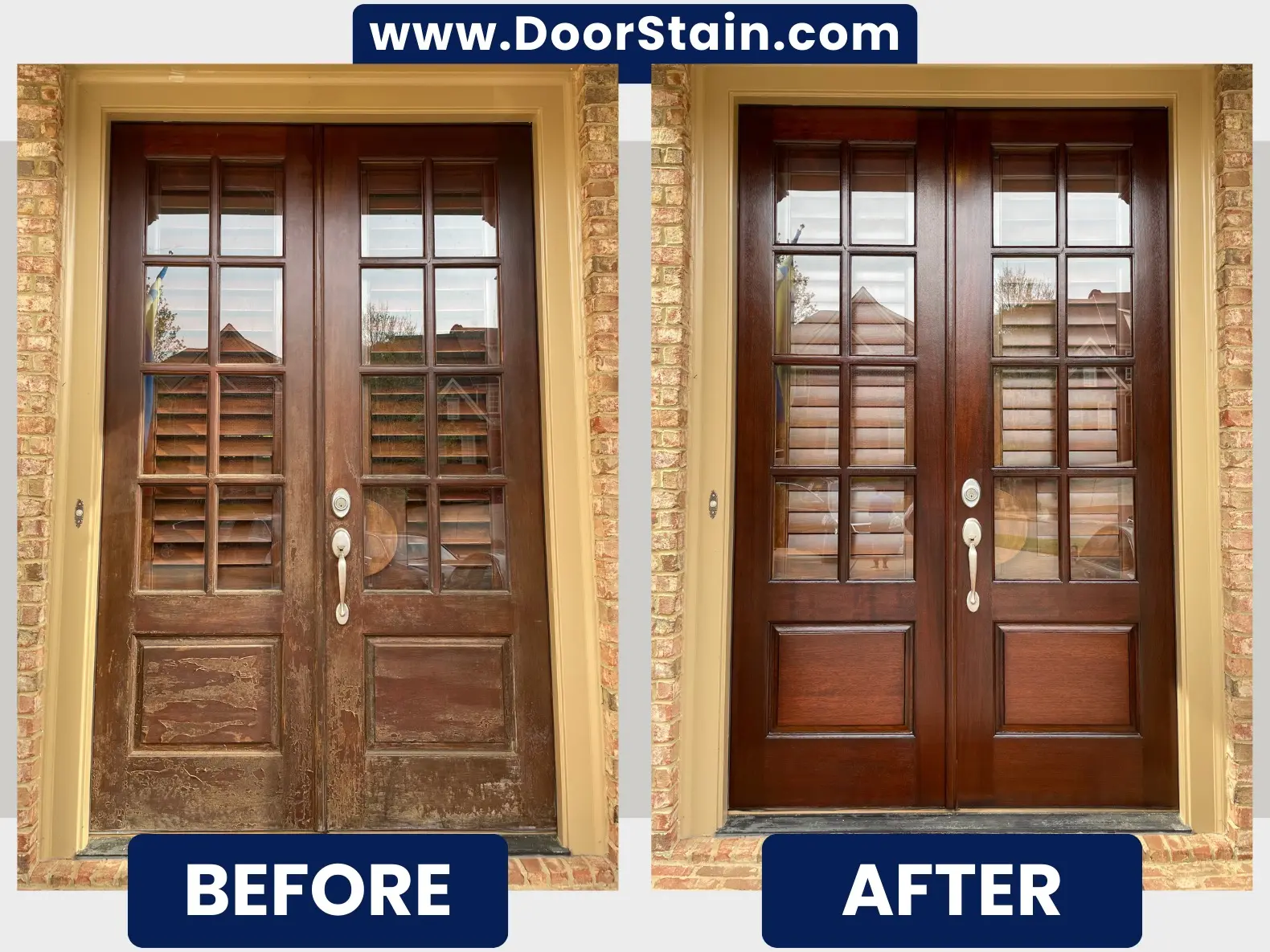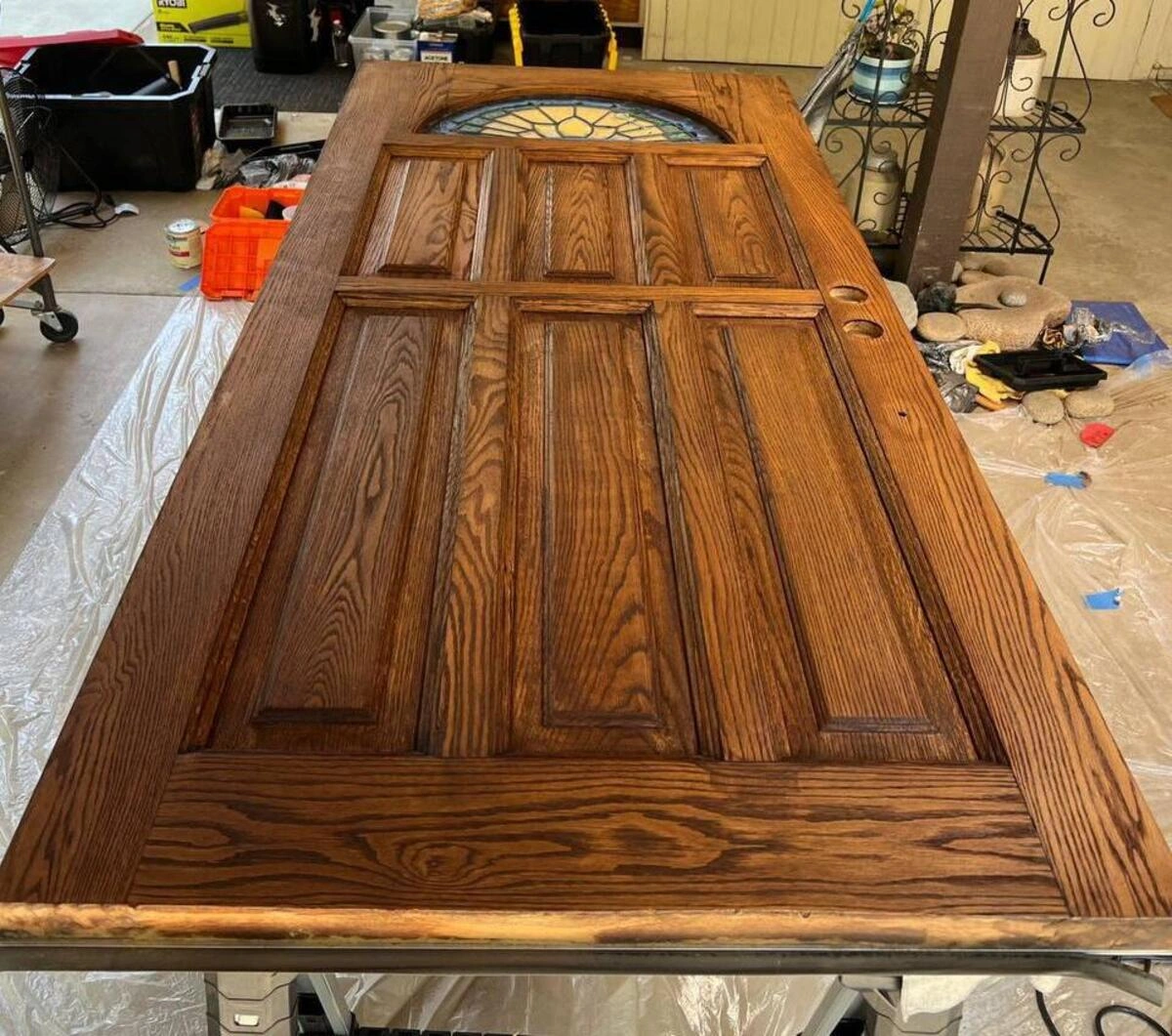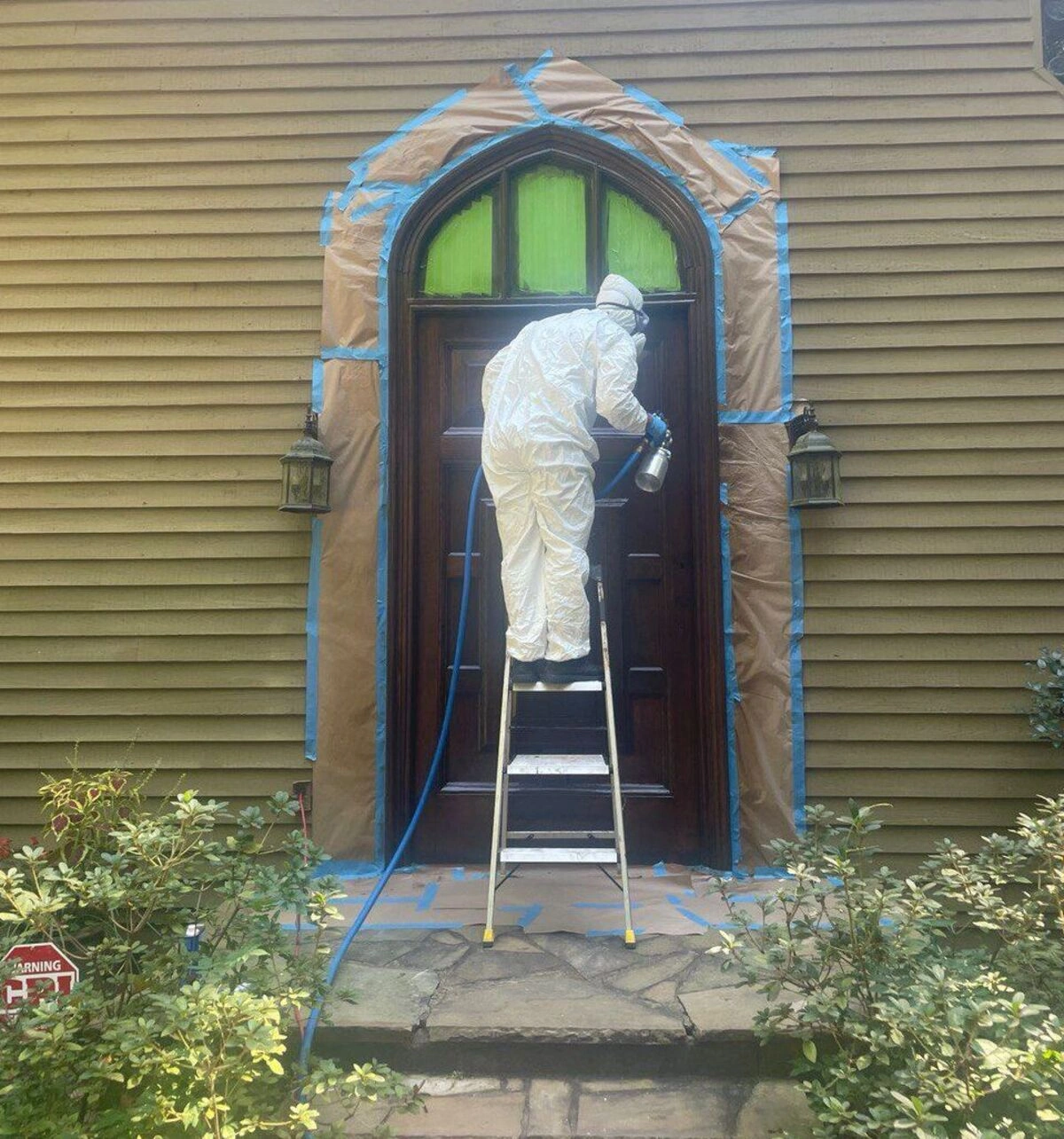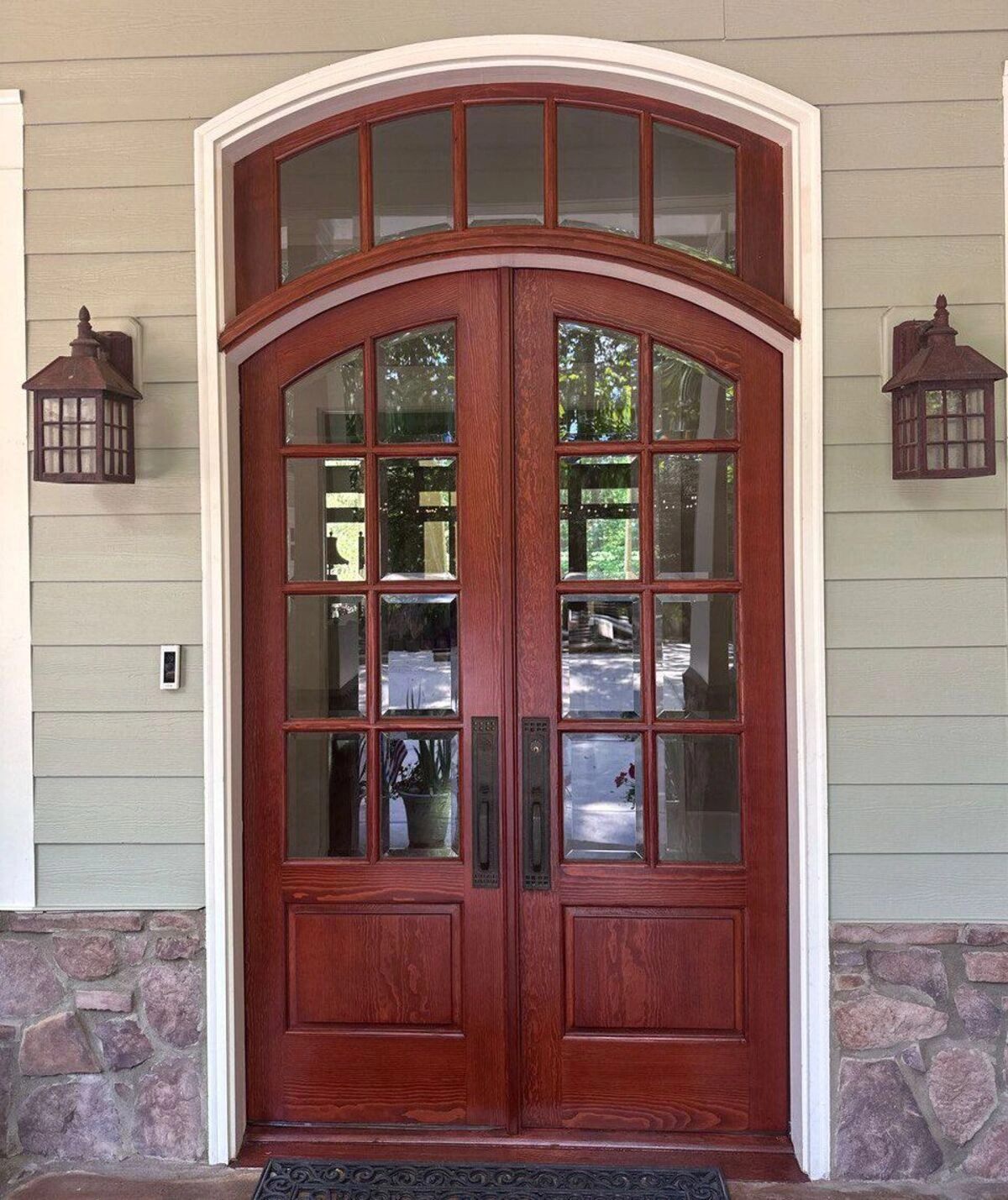Table of Contents
Welcome to our step-by-step guide on How to Refinish a Door. While this is a basic guide designed to help homeowners understand the process, door refinishing can be a complex task. If at any point it feels overwhelming, remember that professionals like us at DoorStain South Florida, Miami, and surrounding South Florida areas Door Refinishers are here to help. With years of experience in door refinishing in South Florida, Miami, and surrounding South Florida areas and surrounding areas, we’ve honed secret techniques and advanced methods that ensure a flawless finish every time. So, whether you’re searching for “Door Refinishing Near Me” or “Professional Door Restoration in South Florida, Miami, and surrounding South Florida areas” or “Door Refinishing South Florida, Miami, and surrounding South Florida areas,” this guide is tailored for you.
South Florida, Miami, and surrounding South Florida areas, with its unique climate and urban charm, demands homes that stand out. One of the first things people notice about a home is its front door. Over time, even the most majestic doors can lose their luster. That’s where door refinishing comes into play, especially in bustling areas like South Florida, Miami, and surrounding South Florida areas.
Read it: Door Refinishing West Palm Beach, Palm Beach Gardens & Wellington
Why Door Refinishing is Essential
Doors, especially wooden ones, are exposed to the elements, leading to wear and tear. Refinishing not only restores its beauty but also extends its lifespan. For residents in areas like Alpharetta, Marietta, Sandy Springs, Johns Creek, Kennesaw, and Roswell, understanding the nuances of door refinishing is crucial. Whether you’re looking for door refinishing in Alpharetta, Marietta, or any part of Metro South Florida, Miami, and surrounding South Florida areas, this guide provides a comprehensive overview.
From wooden door refinishing to fiberglass door refinishing near South Florida, Miami, and surrounding South Florida areas, Refinish a Door process ensures longevity and beauty. Remember, whether it’s wood finishing in South Florida, Miami, and surrounding South Florida areas or door restoration in Georgia, always trust professionals for the best results.
Interested in learning How to Maintain a Wood Door Instead? Check Out Our Other Guide by Clicking Here!
Looking for the Best Door Refinishing South Florida, Miami, and surrounding South Florida areas has to offer? Explore our range of services, from Refinish a Door in South Florida, Miami, and surrounding South Florida areas to professional wood restoration. We are the door refinishing experts you’ve been searching for. www.DoorStain.com
Step-by-Step Guide To Refinish A Door – Wood Door Refinishing South Florida, Miami, and surrounding South Florida areas
Estimated Cost: $400
Total time: Around 9-20 hours
Materials Needed:
- Wooden Door
- Plastic Sheet
- Liquid Stripper
- Sandpaper
- Tack Cloth
- Soft Brush
- Pre-Stain Wood Conditioner
- Wood Stain
- UV-Resistant Exterior Varnish
Tools Required:
- Orbital Sander
- Paintbrushes
- Rags or Towels
- Protective Gloves
- Safety Eyewear
- Masks
- Screwdriver or Drill
- Sawhorse set
Preparation
Begin by removing the door from its hinges. This step is crucial as it allows for a thorough and even application of products. Working with a door that’s off its hinges makes the refinishing process more manageable. If you’re working alone and find it challenging to remove the door, you can opt to refinish it while it’s still in place. In such cases, always cover the doorway with a plastic sheet to protect your home’s interior from dust and debris.
Read it: Door Refinishing Miami, FL & Nearby Areas
Strip the Finish
Over the years, doors accumulate layers of paint, varnish, and other finishes. To bring back the door’s original charm, apply a quality liquid stripper to its exterior. This product helps in effectively removing the old finish, making the wood ready for sanding. Always follow the manufacturer’s instructions and ensure you wear protective gloves and eyewear for safety.
Sand the Door
Sanding is a vital step in the refinishing process. Start with an 80-grit sandpaper to tackle any stubborn residues or imperfections. Once the initial sanding is done, progress to a 150-grit sandpaper to smoothen the surface further. Finally, use a 250-grit sandpaper for a smooth, ready-to-stain surface. Remember to always sand in the direction of the wood grain to avoid unwanted scratches and achieve a uniform look.
Clean the Door
After sanding, it’s essential to have a clean surface for staining. Use a tack cloth or a soft brush to meticulously wipe away any sawdust or debris from the door. This step ensures an even and smooth application of the stain, enhancing the door’s final appearance.
Pre-Stain Conditioning
Before applying the stain, treat the door with a pre-stain wood conditioner. This product prepares the wood to absorb the stain evenly, ensuring a consistent and vibrant color throughout the door.
Apply the Stain
Choose a stain shade that complements your home’s exterior. Using a clean rag or brush, gently apply the stain, ensuring you move in the direction of the wood grain. Allow the stain to penetrate the wood for a few minutes, then using a separate clean rag, wipe off any excess stain to prevent blotchy spots.
Varnish for Protection
For the door’s protection, especially from the sun’s UV rays, select a varnish that offers UV protection. Carefully apply the first coat, ensuring an even spread, and let it dry as per the manufacturer’s recommendations.
Light Sanding
Once the first varnish coat is dry, it’s time for a light sanding session. Using a 250-grit sandpaper, gently sand the surface. This step prepares the door for the second coat and ensures a smooth, glossy finish.
Apply the Final Varnish Coat
Apply a second coat of varnish to seal in the stain and provide a protective barrier against weather elements.
Pro Tip: For a more vibrant color, consider adding a light stain coat on top of the first layer of varnish.
Let it Dry
Patience is crucial at this stage. Allow ample time for the door to dry before reattaching hardware and rehanging it. Ensure the varnish is fully set to prevent any smudges or fingerprints.
Optional: Additional Coats
For enhanced protection and longevity, we recommend applying at least 3-4 heavy varnish coats. To achieve this, simply repeat the light sanding and varnishing steps until you’ve reached the desired number of coats.
Door Refinishing Master Guide: Finishes, Eco Options, Costs & Long‑Term Care
Professional door refinishing does far more than refresh color. Proper wood door restoration seals end grain, blocks UV, resists humidity, and stops water from creeping into mortises and rails. When you plan refinishing wood doors on a smart schedule, you protect structure, retain character, and avoid premature replacement. Timely efforts to restore wood door assemblies also improve energy performance because a smooth slab seats cleanly against weatherstripping. This guide explains exactly how to refinish door surfaces like a pro—from products and processes to climate strategy, costs, and care.
Quick result:
Many entries can be completed same day on‑site. With the right plan for
refinishing a wood door
, you’ll have light use by evening and full cure over the next few days.
Read it: Top-Rated Door Refinishing Services in Fort Lauderdale
Benefits of Door Refinishing Beyond Aesthetics
Choosing to refinish door surfaces is a structural decision as much as a cosmetic one. Clear coats and stains installed during refinishing a wood door shed rain yet breathe Slightly, letting vapor escape. This reduces swelling, checking, and cupping. Early interventions in refinishing wood doors also protect adjacent hardware and glazing by keeping moisture out of joints.
When you proactively refinish a door before films fail, you preserve the original millwork and grain patterns that give an entry its personality. Owners who understand how to refinish a door on a maintenance cycle typically go years without a full strip, saving time and money while keeping curb appeal high.
Choosing the Right Finish for Different Door Materials
There is no single product that fits every wood door refinishing scenario. For sun‑struck, exterior entries, penetrating stains plus flexible marine‑grade varnish excel at exterior door refinishing, moving with seasonal expansion. For interiors, water‑borne polyurethanes and hard‑wax oils shine when you refinish interior doors and need low odor and fast cure. Veneers and engineered faces respond best to toner coats and light interior refinishing door methods that avoid over‑sanding, while solid hardwoods (mahogany, oak, walnut) tolerate deeper sanding with controlled film builds.
Finish Selector at a Glance
- High sun / exterior: Penetrating stain + spar/marine varnish for flexible protection (refinishing exterior wood door assemblies).
- Covered porch / mixed exposure: Oil‑modified urethane or hybrid systems with UV absorbers.
- Interior passages: Water‑borne polyurethane, hard‑wax oil (fast cure; low odor) for refinish interior doors.
- Veneers / engineered skins: Toner + clear coats; gentle sanding (interior refinishing door approach).
Eco‑Friendly and Low‑VOC Door Refinishing Options
Green does not mean fragile. Modern water‑borne urethanes and plant‑based oils keep refinishing wood doors low‑odor while curing to durable films. Prefer natural looks? Use low‑VOC stains to refinish wood door panels in occupied spaces, condos, or multifamily corridors. If you’re unsure how to refinish a wood door sustainably, pair low‑VOC coatings with HEPA dust collection, proper rag disposal, and minimal solvent use. You’ll get clarity and protection without the fumes.
Eco Tip:
Low‑VOC systems are excellent for night or off‑hours projects; residents wake up to a refreshed entry without lingering odor.
Common Mistakes to Avoid When Refinishing a Door
The most common error with how to refinish a door is rushing prep. Skipping grit steps leaves swirls that telegraph through clear coats. Over‑stripping during stripping and refinishing wood doors can loosen glue lines and lift veneer; neutralize chemicals fully and allow proper dry time. Many DIY results for how to refinish a wooden door also show uneven stain—solve with conditioning sealer, test panels, and consistent, with‑the‑grain wiping.
- Too thin/too thick films: Both shorten life—follow dry‑film‑thickness guidelines and recoat windows.
- Ignoring edges: Always seal the top, bottom, and latch‑side end grain when you refinish door.
- Skipping color tests: Stain behaves differently by species; sample first.
How Climate Affects Door Maintenance and Finish
Coastal and desert climates punish finishes. In hot sun, exterior door refinishing must use UV blockers and flexible resins. In humidity, breathable systems help refinishing exterior wood door projects release vapor. Wind‑driven rain and salt demand routine wash‑downs and scheduled light coats to refinish exterior wood door faces before breakdown begins. High movement from temperature swings calls for regular re‑varnishing wooden doors every 12–24 months on sun‑struck elevations.
Pro‑Level Tools & Techniques Most DIY Guides Miss
Professionals treat each project as controlled door resurfacing. Moisture meters, perfect masking, and dustless sanding with HEPA extraction are standard. During wood door restoration, pros use multi‑grit progressions (80/120/150/180), scrapers for profiles, and tack‑cloth or solvent wipe‑downs for bonding cleanliness. Color work uses test panels, toner coats, and glazes to align with surrounding millwork. Edges and end grain are sealed every time you refinish door—critical for moisture defense.
Cost vs DIY vs Hiring a Professional
Materials are modest; labor and risk dominate refinishing wood doors. If you know how to refinish wood door surfaces and own quality sanders, sprayers, and PPE, DIY can save money. But a sand‑through, fisheyes, or blotchy stain when you refinish a door can force a full strip. Hiring a specialist in refinishing a wood door buys speed, dust control, color accuracy, scheduling certainty, and warranty—often completing fronts same day on‑site.
Creative Door Finishing Ideas for a Modern Look
Color trends shift, but natural timber remains timeless. Consider translucent stains when restaining doors to enhance grain, or pigmented oils for warm, contemporary palettes. If you’re weighing how to restain wood doors without going too dark, use a conditioning sealer and toner layers. You can restain wood door panels slightly deeper than rails for tailored contrast, or pair a driftwood‑gray restain door with matte black hardware for modern cottages.
Read it: Door Refinishing Services in Boca Raton and Surrounding Areas
How to Extend the Life of Your Door After Refinishing
Protection is a routine, not an event. Light scuff‑sand and re‑varnishing wooden doors before failure lines appear will refresh gloss without stripping. Wash gently every few months and remove salt, pollen, and grime promptly. Spot‑repair nicks early when refinishing wood doors so water can’t creep under the film. A breathable cover coat every 12–24 months can refinish wood doors back to clarity and sheen. Re‑caulk joints and restore wood door putty lines at glass stops to seal out water.
Signs It’s Time to Refinish or Replace Your Door
Graying fibers, checking, and flaking film mean immediate refinishing wood doors. Darkened end grain or halo rings around hardware also signal the need to refinish door. If research into how to restore a wood door reveals rot, delamination, or warped rails, replacement may be more cost‑effective than another round of refinishing a door. When in doubt, request a moisture test and quote for both options.
Maintenance Calendar & Owner Checklist
- Monthly: Quick wipe with mild soap and water; check sweeps and weatherstripping.
- Quarterly: Inspect sun‑facing panels; note gloss loss; schedule touch‑ups for refinishing wood doors.
- Annually: Light scuff and clear maintenance coat on high‑exposure entries; re‑seal edges.
- Every 2–3 years: Full assessment, especially for coastal homes; plan re‑varnishing wooden doors as needed.
Glossary (Know the Terms)
Door resurfacing: A controlled process of leveling, coloring, and re‑coating an existing slab and edges.
Toner coat: A transparent or semi‑transparent tinted layer used to refine color during refinishing a wood door.
End grain: The top and bottom edges—always seal these when you refinish a door to block moisture.
Conclusion
Refinishing your exterior door can be a rewarding DIY project, but it’s essential to get it right. This guide provides a basic overview, but the true art of door refinishing involves intricate techniques and expert knowledge. If you ever feel the task is too daunting or if you’re aiming for a professional-grade finish, don’t hesitate to reach out to us. At DoorStain, we’ve been mastering the art of door refinishing in areas like Alpharetta, Marietta, and Metro South Florida, Miami, and surrounding South Florida areas for years. Our team uses advanced directions and secret techniques that only years of experience can bring. So, whether it’s “Wood Door Refinishing Near Me” or “Best Door Refinishing South Florida, Miami, and surrounding South Florida areas” that you’re searching for, remember that we’re just a call away. Trust the experts, and let us bring your door back to life.
Don’t forget to maintain your recently refinished doors to always keep them looking brand new!
Interested in learning How to Maintain a Wood Door Instead? Call us: +1 (786) 772-5060
Looking for the Best Door Refinishing South Florida, Miami, and surrounding South Florida areas has to offer? Explore our range of services, from wood restoration in South Florida, Miami, and surrounding South Florida areas to professional door restoration. We are the door refinishing experts you’ve been searching for.
FAQs
How much does it cost to refinish a wood door?
Scope and condition drive price. A basic sand‑and‑recoat is less than a full strip, stain, and multi‑coat varnish. Premium species, glass details, and on‑site constraints add cost.
Is it worth restoring old doors?
Yes. Solid hardwoods are costly to replace. Restoration preserves character, fits existing jambs, and typically outlasts budget new slabs.
Can you refinish a wood door?
Absolutely. With the right prep, stains, and clear coats, most sound doors can be brought back to near‑new appearance and protection.
How much to refurbish a front door?
Expect higher costs than interior doors due to exposure and coating systems. Quotes reflect prep level, stain complexity, and number of clear coats.
How long does refinishing a door take?
Most on‑site projects finish in a day, with full cure over several days depending on product and weather.
Is it worth hiring a professional for refinishing wood doors?
Yes if you want predictable color, dust control, clean job sites, and a warranty. Pros mitigate risk and minimize downtime.
Can exterior doors be refinished like interior doors?
Yes, but exterior systems must flex and block UV. Interior products aren’t suitable for sun‑exposed entries.
What’s the maintenance timeline after a refinish?
Plan a light wash every few months, quick spot fixes as needed, and scheduled re‑varnishing wooden doors on high‑sun exposures every 12–24 months.
Get a Free Quote for Door Refinishing Today
Ready to refresh your entry? Our team can review photos, confirm scope, and recommend coatings that fit your climate and exposure. If you’ve been searching for door refinishing near me and want predictable, long‑lasting results, request a consultation today. We’ll outline timelines, warranty, and upkeep—then deliver craftsmanship you’ll be proud of.




